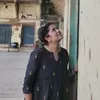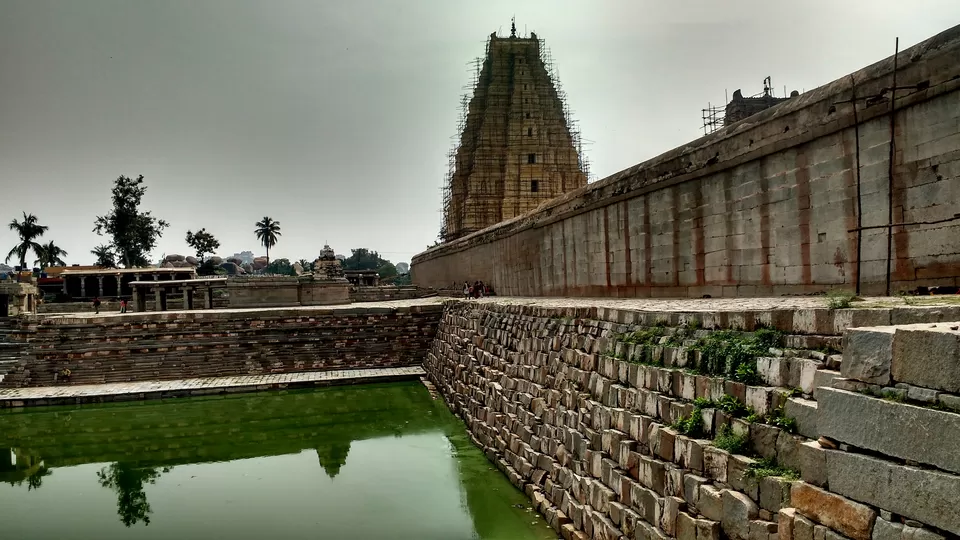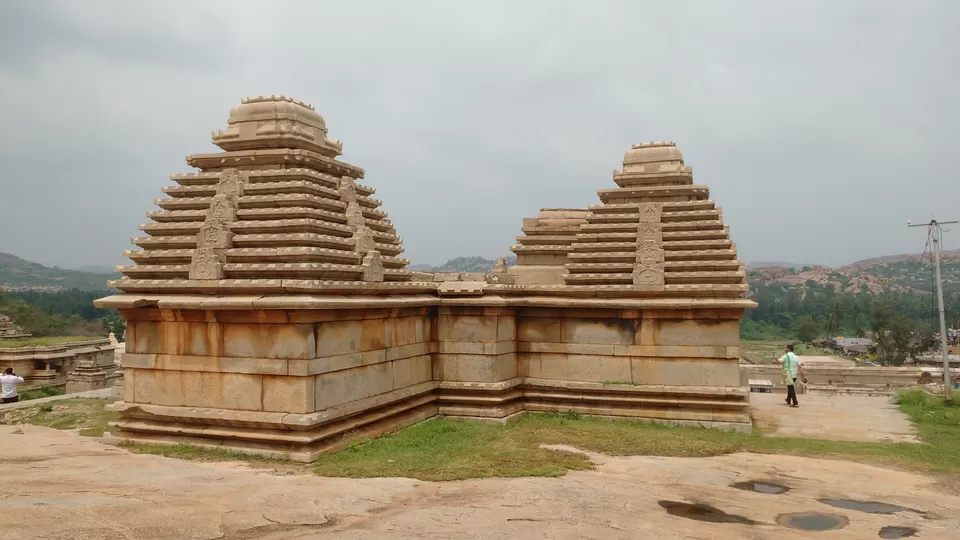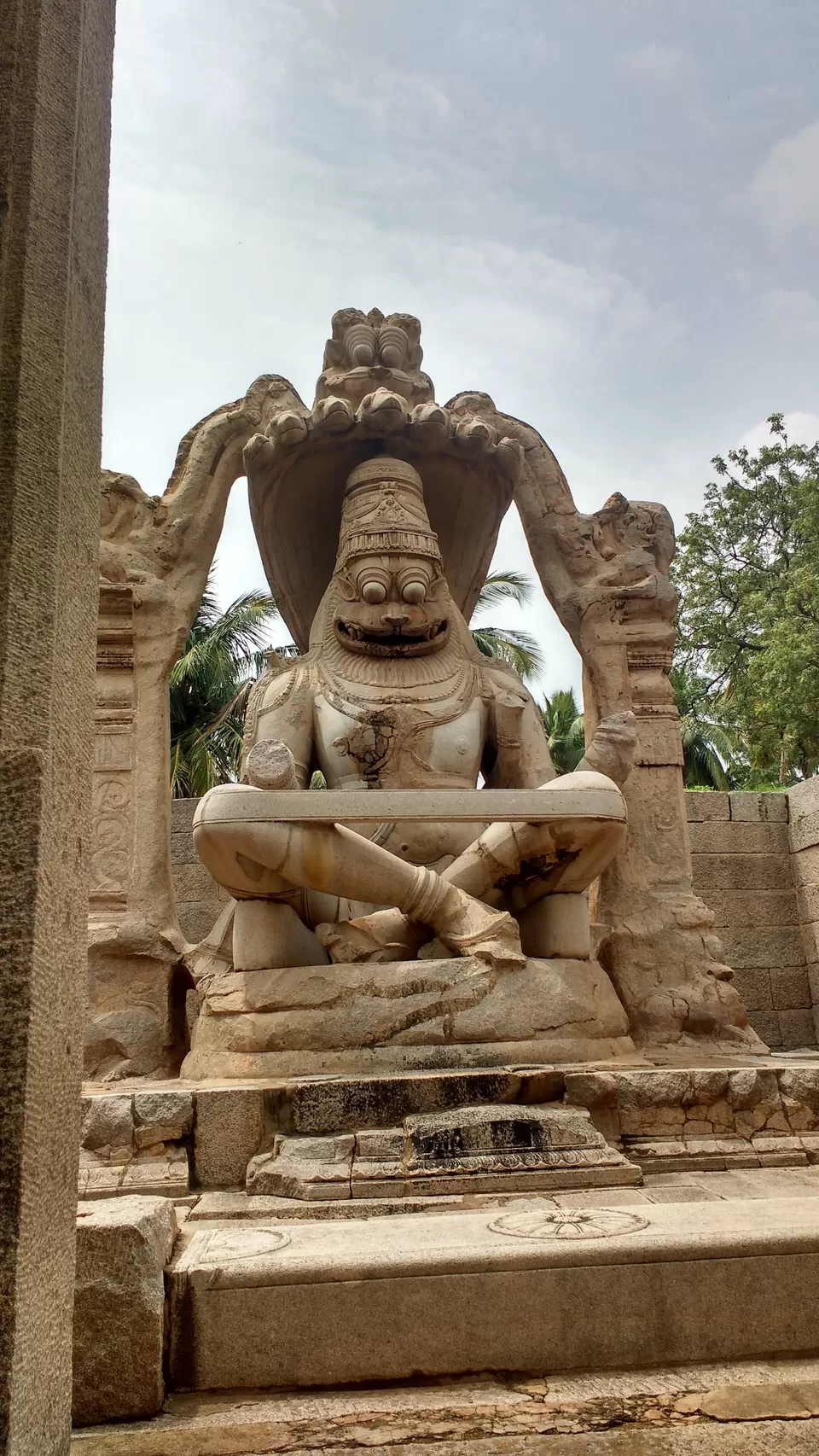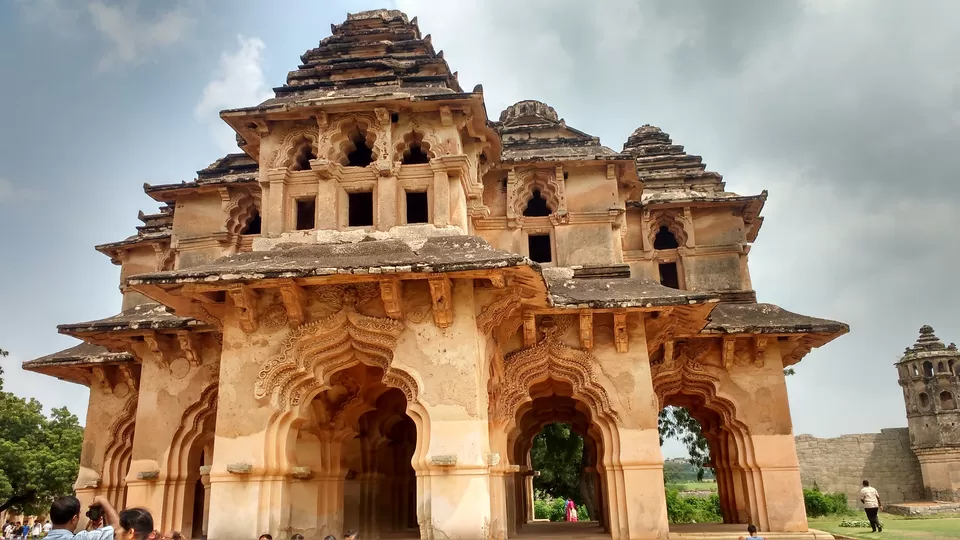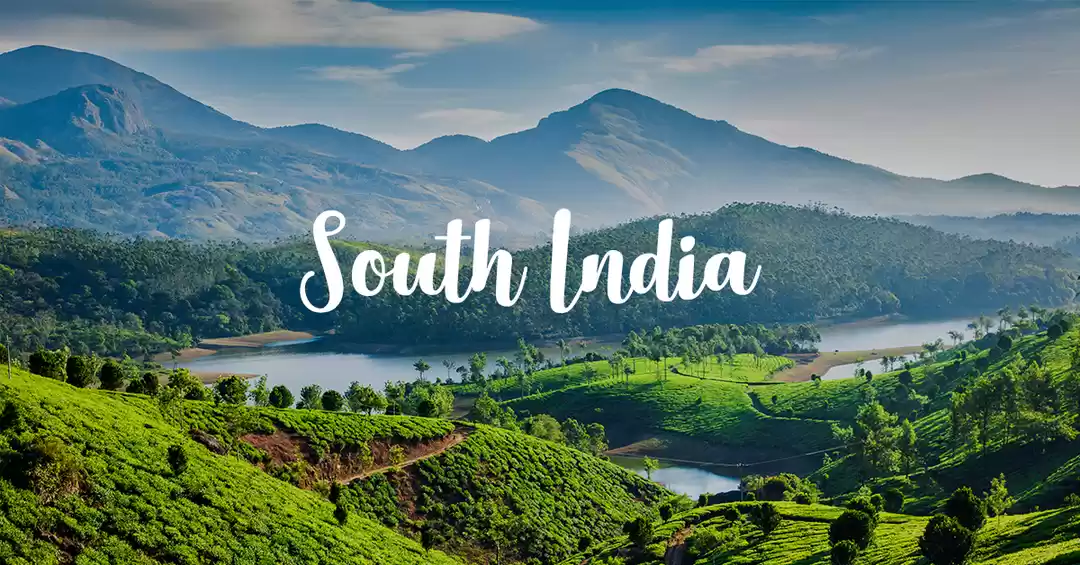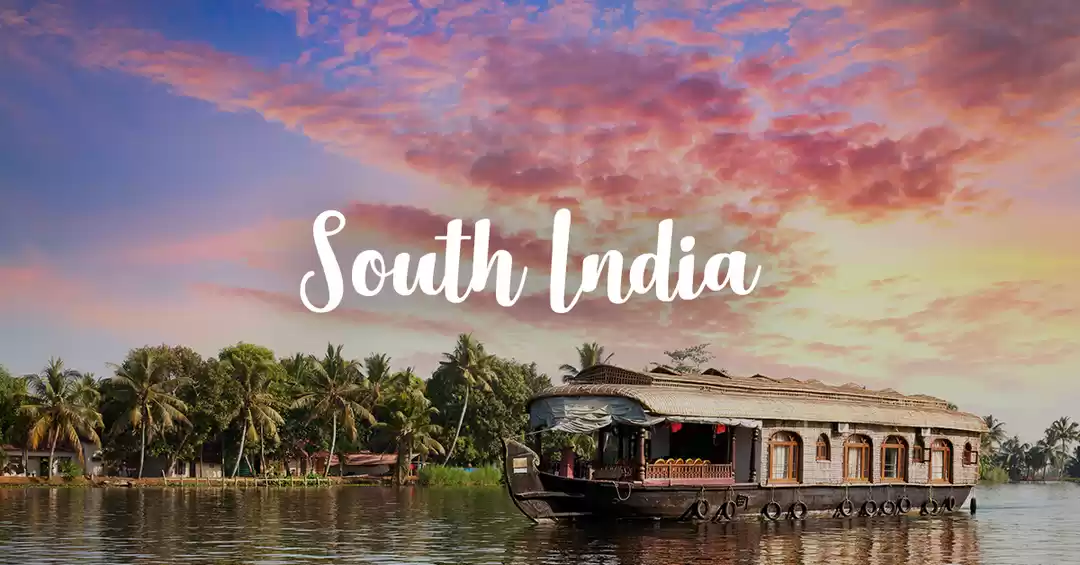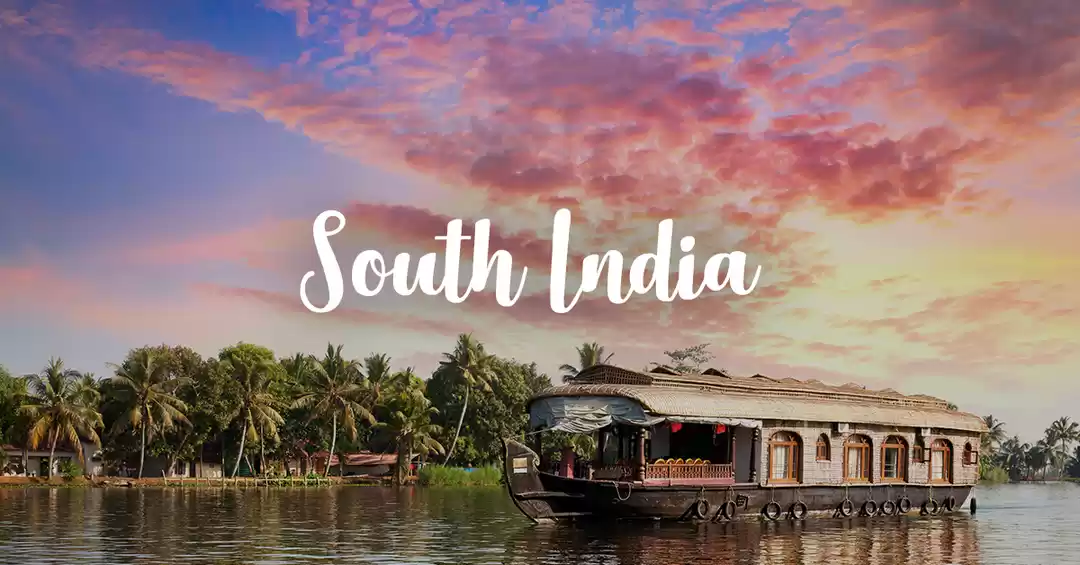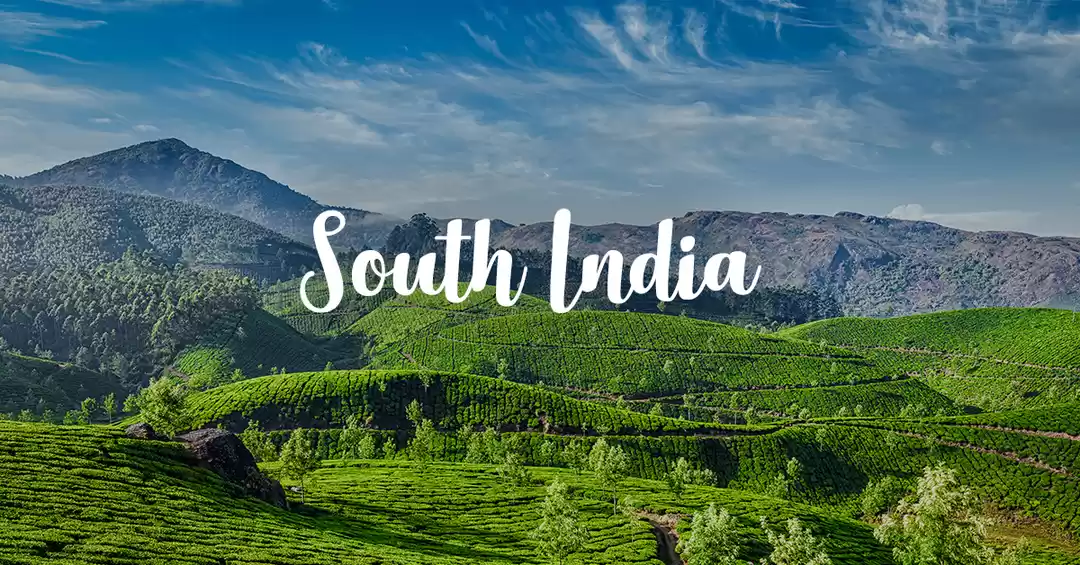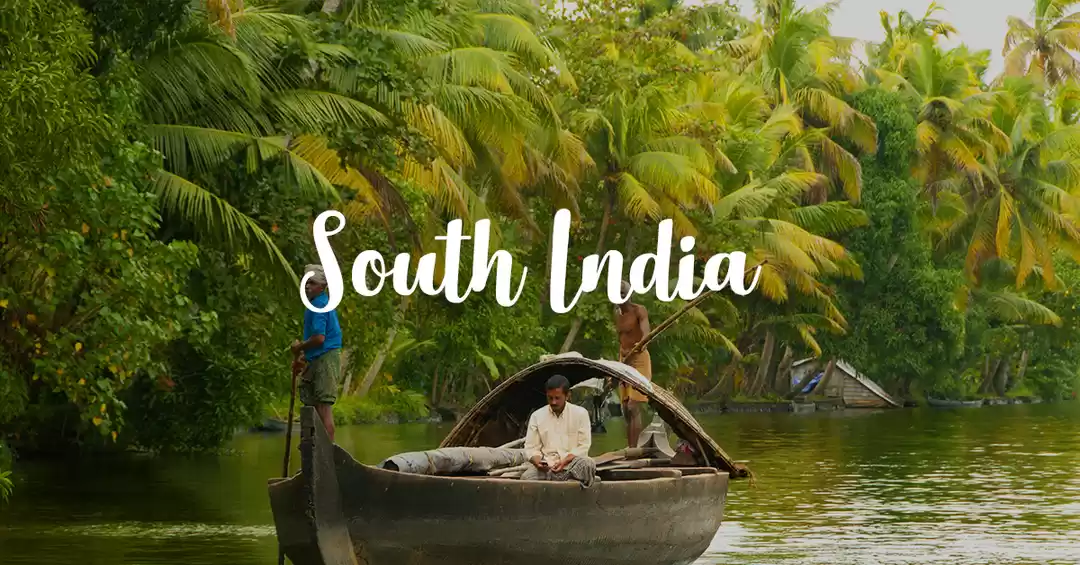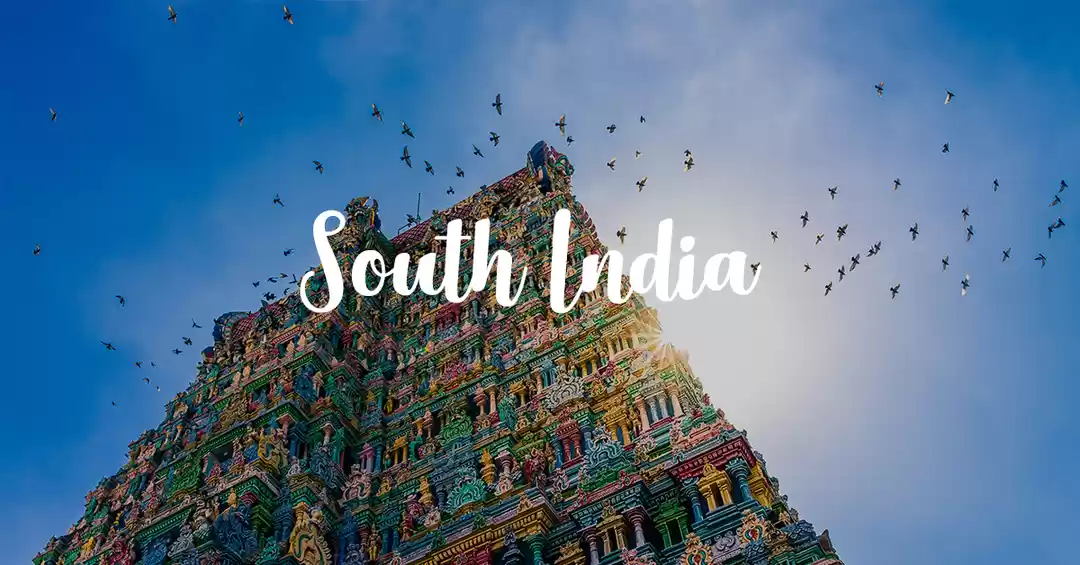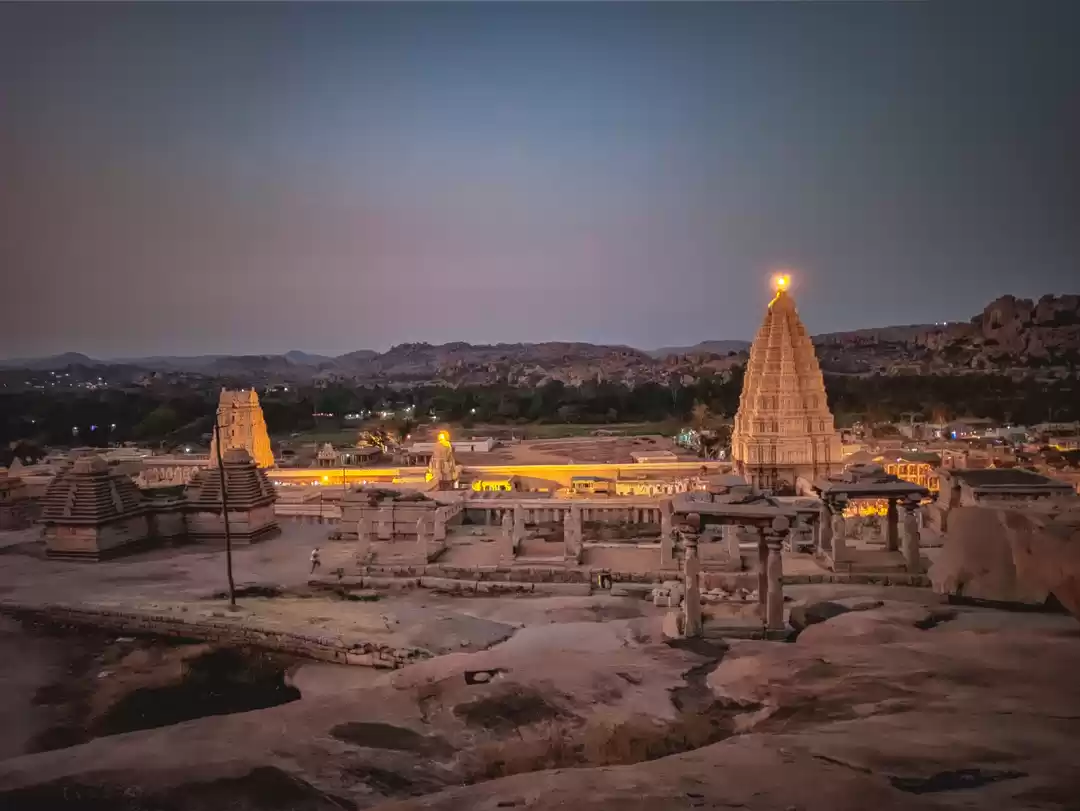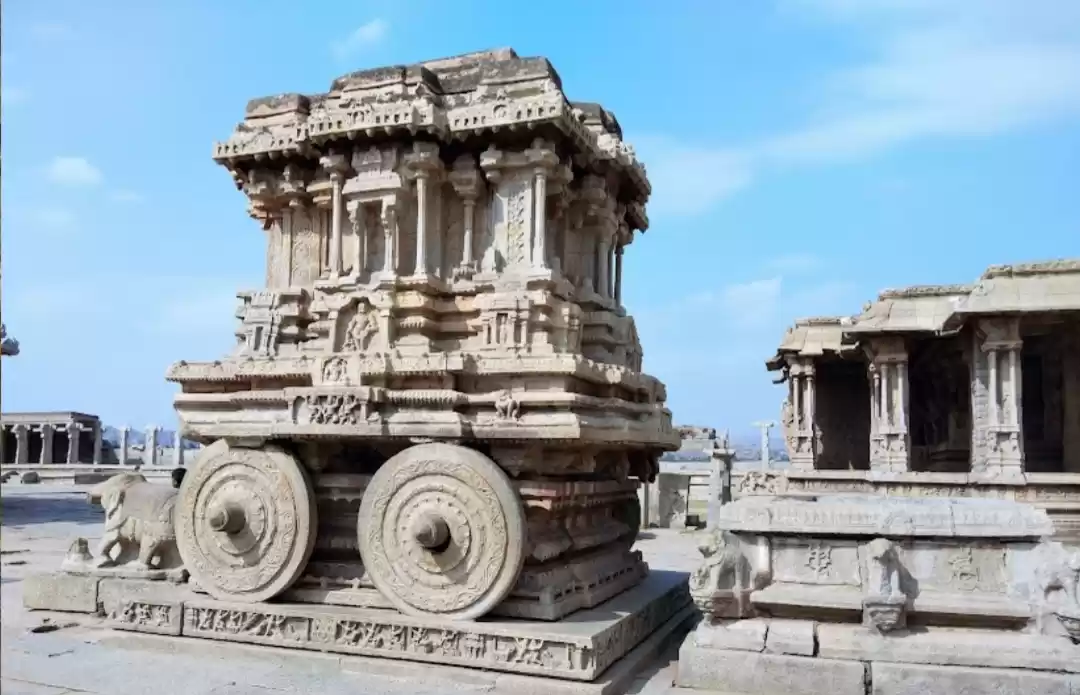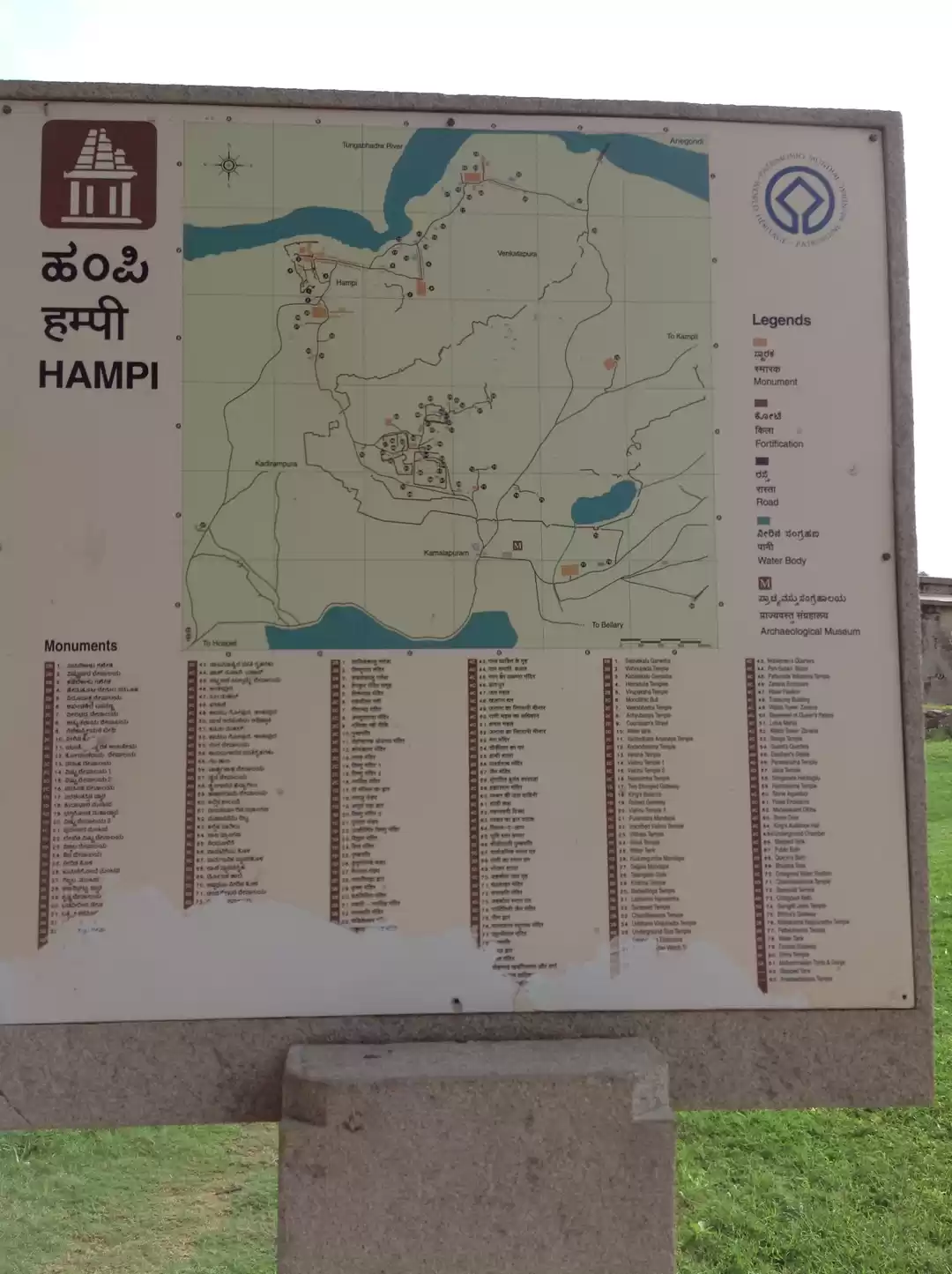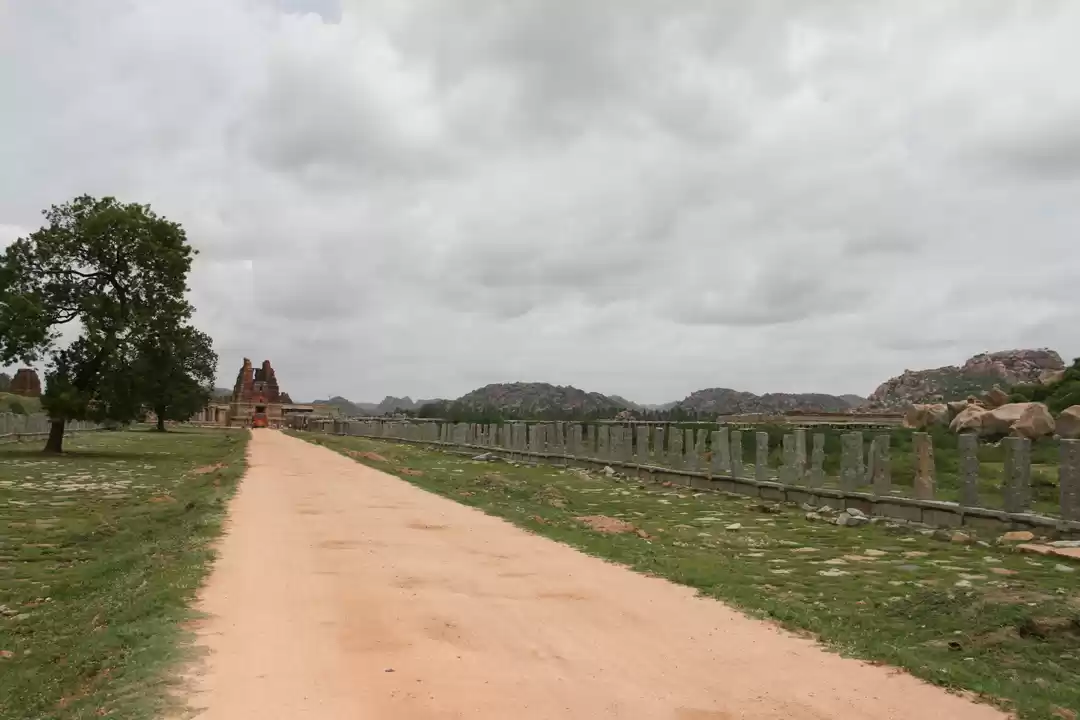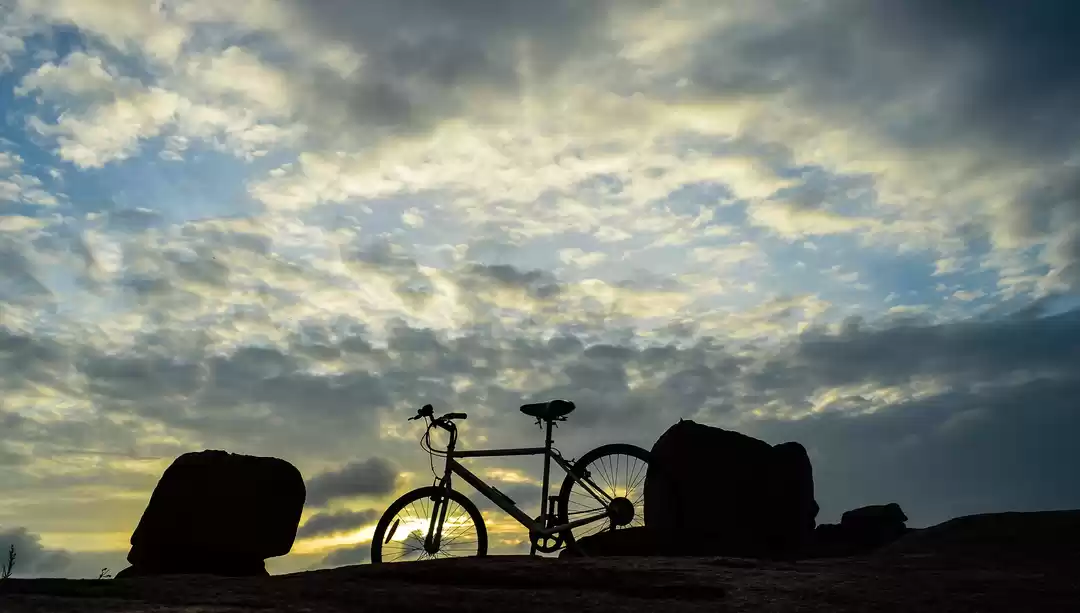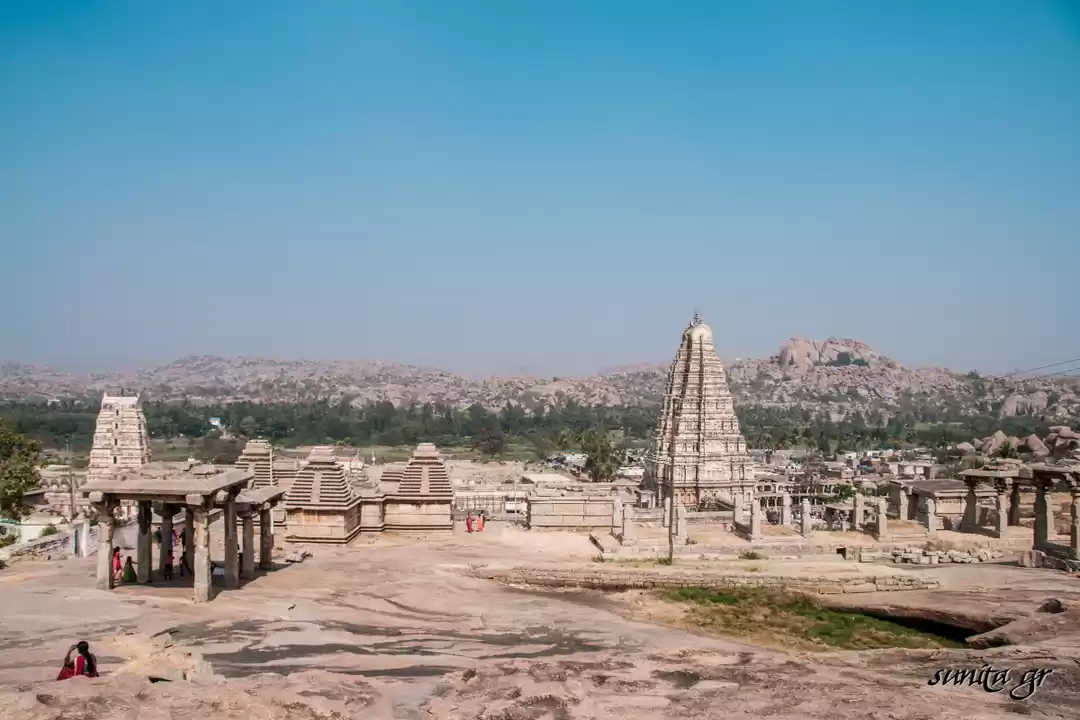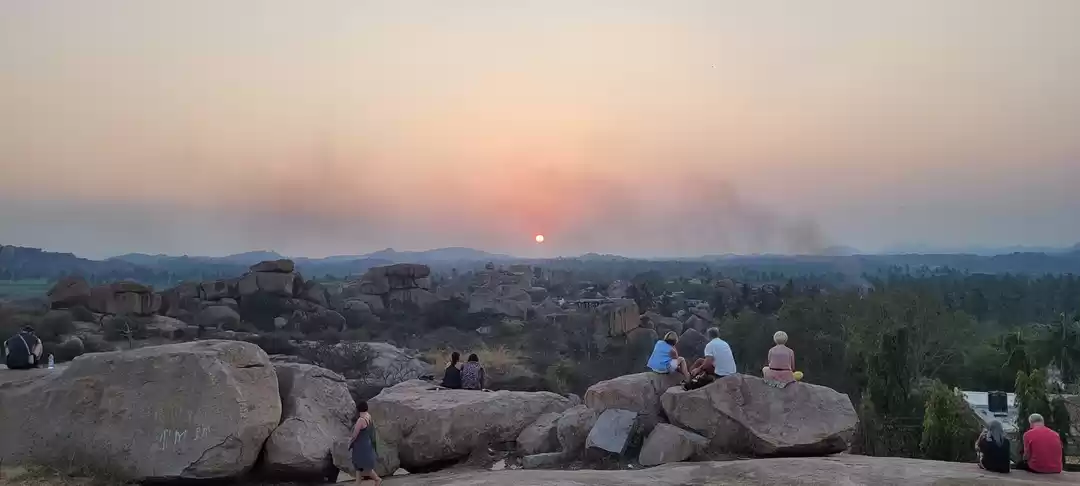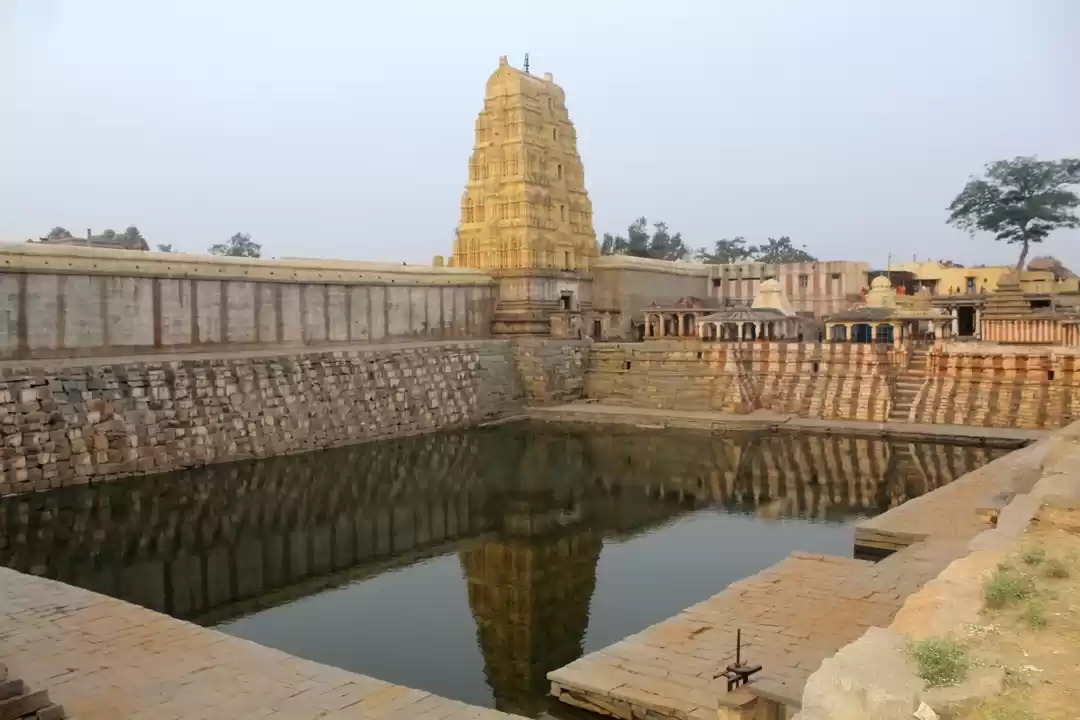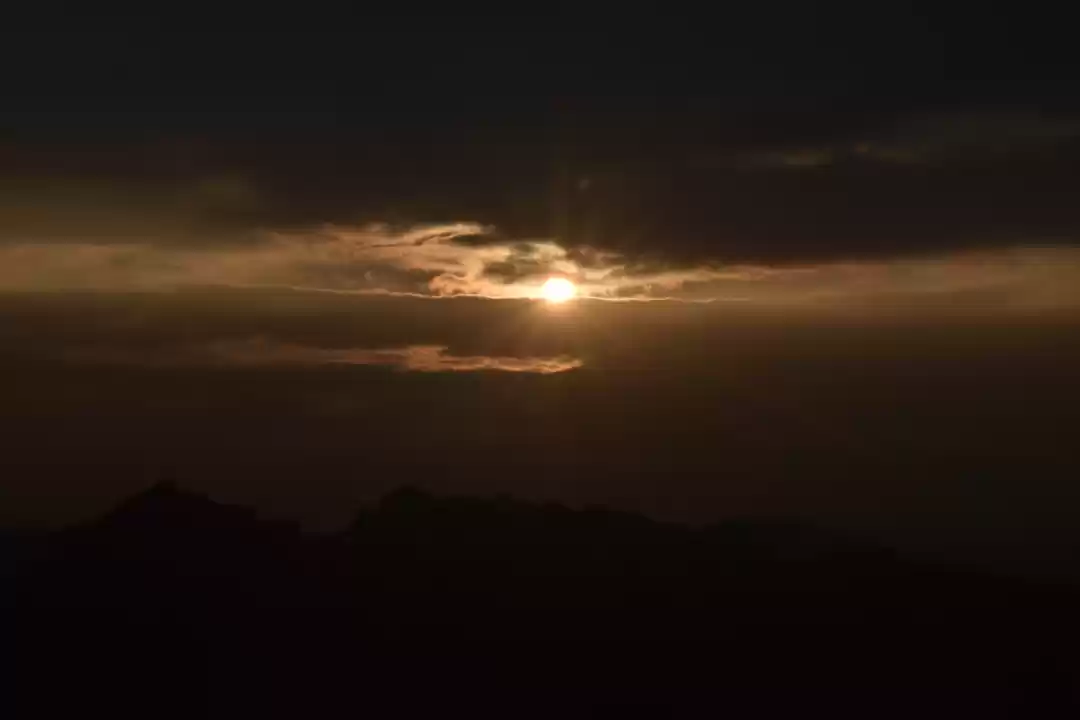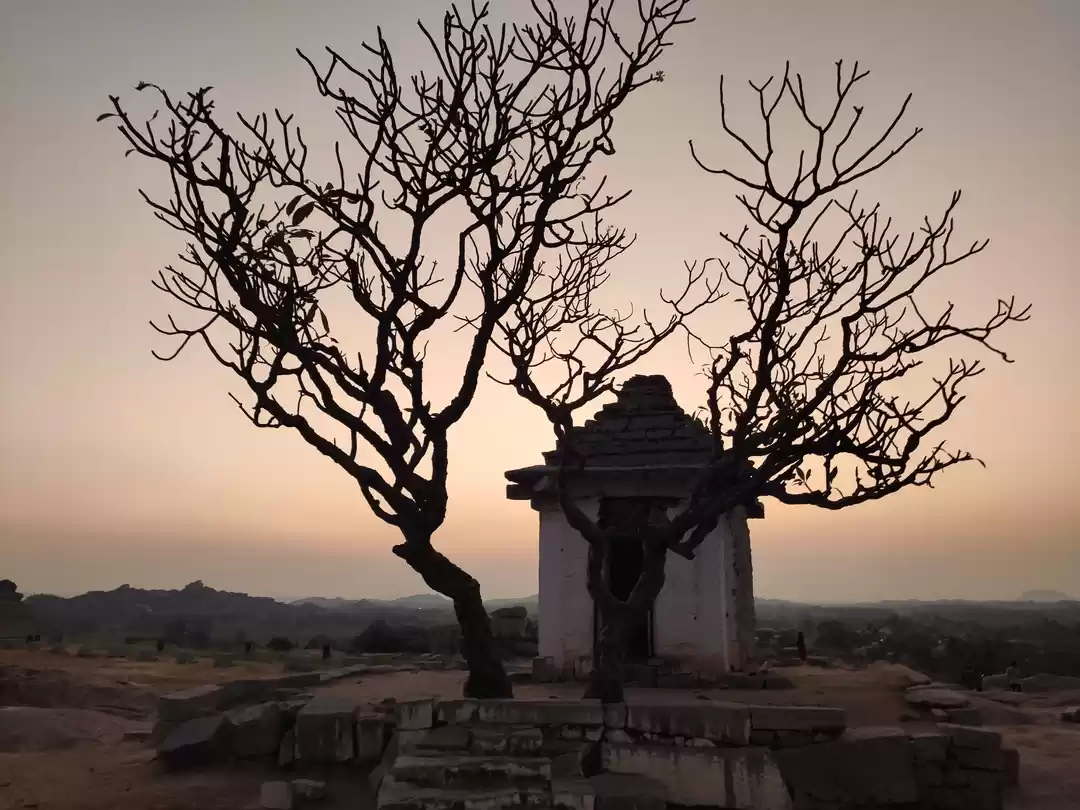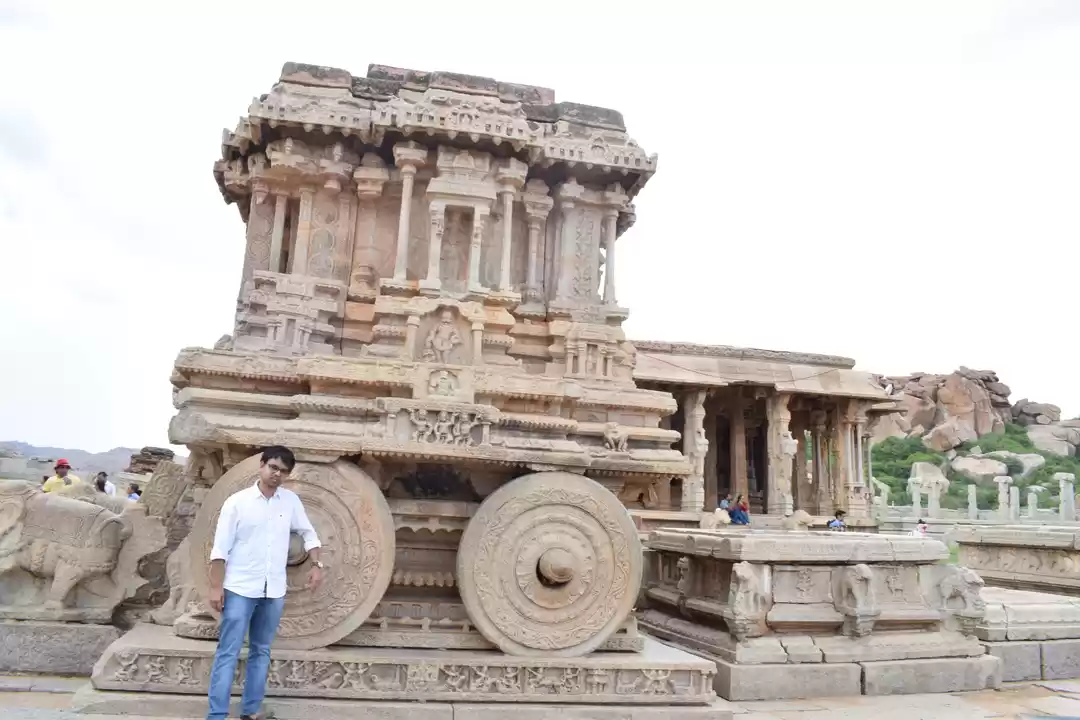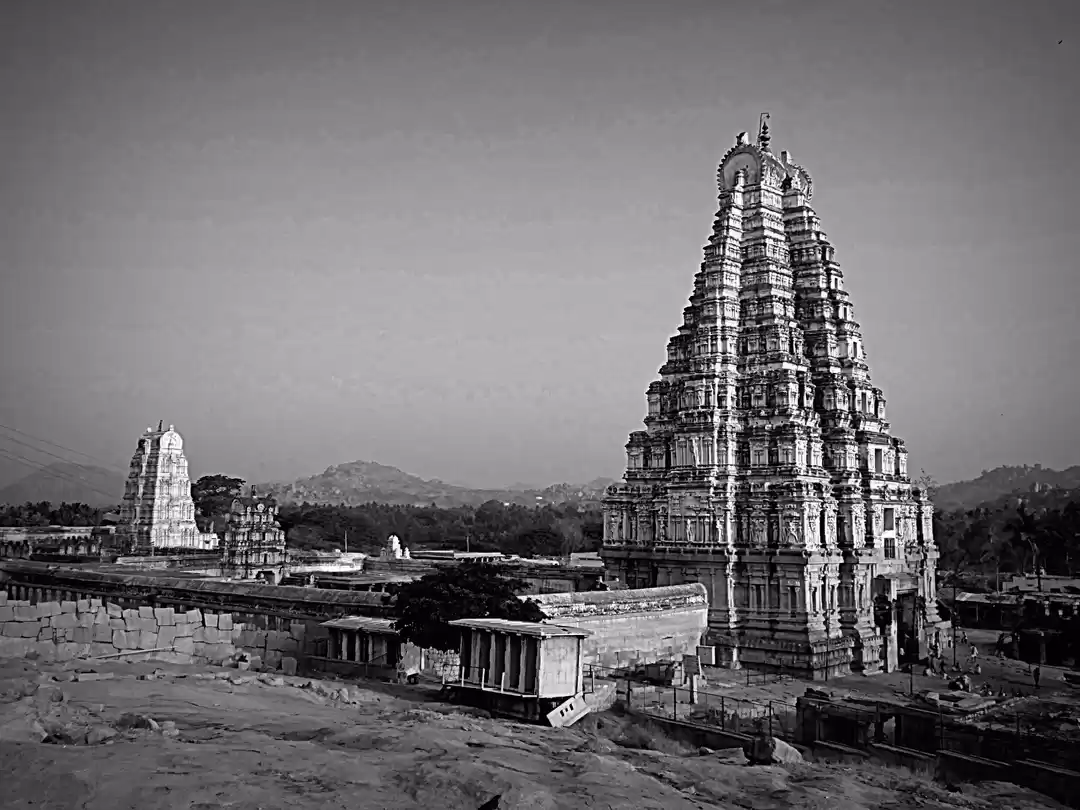
It all started with the very famous Goa, then came down to Pondicherry and out of no where one of my friends suggested Hampi and all of us agreed right away. The plan was for two days. As my parents had stayed in Hospet (13kms from Hampi) for quite sometime I was pretty familiar with the whereabouts.
We opted for budget travelling and as it was a long weekend we didn't have a lot of options for the buses or trains. With whatever little available we booked the bus tickets to Hospet from Bangalore in KSRTC Suhas, a semi-luxury bus. We opted Shanbagh Internationl . They are one of the oldest hotels in the city (you will realise it as soon as you enter). We had reserved a room on triple sharing basis with no pre-booking charges & complimentary breakfast. Mind you it's nothing like one of those fancy hotels you might have stayed but it has got all the bare minimum facilities at a bargain.
Our arrival at Hospet was delayed ( 3 hours to be precise) due to road construction work & the heavy traffic in Bangalore the previous night. We hogged our brekky, got ready ASAP (imagine 3 girls getting ready in a short period of time :) and started off to explore.
Our ride for the entire trip was an auto, this is the most preferred mode of transport in and around Hampi. This trip was all about the lesser known places of Hampi.
The first stop was Anjanadri Hills. The road to the hills was simply blissful. For a certain distance you can find good roads. As you go further it's the kacchaa road. One can find paddy fields on the either side and the aroma of the fields is refreshing. There are small streams here and there where the locals are seen washing their vehicles and cattle. And of course the boulders are found in abundance.

Vehicles can go up to the foot of the hills. One can reach the top only by climbing the steps. There are roughly 570-600 steps. Small shops at the entrance sell tender coconuts, water bottles and biscuits. It is wise to buy water or snacks here as you wont find any shops until you get back to where you started. We bought a bottle of water started our ascend.
Legend says this is the birth place of Lord Hanuman, the son of Anjana Devi and Kesari. The place is situated in the Anegundi region of Hampi. It belonged to the monkey kingdom of Kishkinda the kingdom of Vanara King Sugriva, younger brother Vaali as mentioned in the Ramayana. Hence there are troops of monkeys patrolling the hills :D Bonnet Macaque and Gray langur (specially Black Footed Gray Langur and Tufted Gray Langur ) are found here.
We started climbing roughly around 11 AM. There are steps with railing. Also the construction work is in progress for the shelter. We were frequently greeted by the monkeys, sometimes cheerfully sometimes fiercely. As you go higher the path gets narrow. At certain points you will have to force yourself between the interstice of boulders. As it was almost high noon all the ascendant were exhausted. But the energetic chant of Jai Sri Ram by the descending devotees kept us moving. The more closer we grew to the top the more curious we were to see what was in store for us.
After a good 30 minutes trail we reached the top. Man what a view it was! This place gives a panoramic view of the entire region. The lush green patches of paddy fields, the palm trees, river Tungabhadra making it's course through the boulders is a sight to behold. I must admit that this is one of the best views I have seen in my life.



There is a temple for Lord Hanuman, Sri Ram and Seetha and also one for Anjana Devi (temples for Anjana Devi is rarely found). There is so much peace and positivity in this place that it makes you forget all your worries. If you are looking for a place to sit and have a moment with your self then this is it. For more thrilling view, head to the other side of the temple.

After rejuvenating our senses we started climbing down. The trail down the hill was even more existing and all of us were literally panting by the time we reached the foot of the hill. The tender coconuts at the shop saved the day.
Next stop, Pampa Sarovara. It is just a kilometer away from the hills. The place is on the Anegundi road and is hidden among the hills.It is considered as one of the five sacred lakes in India. In Ramayana this place is refered to be the place where Shabari, a devotee of Rama waited for his arrival. All in all it is regarded as a sacred place by Hindus.
I had read that this place is a beauty when the lotus are in full bloom. But unfortunately all that we could see was some weed. In the surroundings there is a temple for Lord Shiva, Lord Ganesha & Goddess Lakshmi respectively.

By the time we left Pampa Sarovara it was past lunch time. These places do not host large number of hotels and eateries. As advised by the locals we headed towards Anegundi. Not sure if we were misguided or took a wrong route, we couldn't find any of the suggested places. After searching high and low found a small hotel called Sri Tulsi Garden right opposite to the Raghavendra Swamy Mutt in Anegundi. If you are in Anegundi, instead of searching for the cafes mentioned in various other blogs head straight to this place.
With a quick glance I realised that the place is run by Brahmin women. The place is spacious with comfortable seating. The food is 100% vegetarian, served on plantain leaves. Our meal consisted of Chatnipudi (it is Chutney but powder), onion gojju, clutter beans sabji, rasam, sambar, curds, rice, pickle, papad and vermicelli payasam. All this for just ₹ 70. We thanked the ladies for their tasty food and headed to Sanapura Lake.
Sanapura Lake is yet another less visited place in Hampi. Not many locals suggest you to visit this place. As I had seen a lot of good reviews about it, I wanted go there anyway. It is on the way to Anegundi. The lake is more like a backwater of Tungabhadra Dam whic is in Hospet. The water level was pretty good due to the heavy rains. The lake is surrounded by boulders. One can enjoy the coracle ride in calm green waters with a serene view of the nature. They charge ₹ 3oo for short trip and ₹ 600 for long trip. The fare is per coracle irrespective of the number of people. The guys with the coracles also provide assistance for cliff jumping if you are interested. Many caution signs are put up saying there are crocodiles in the water. Do not panic, it's totally safe. When asked the coracle owner said that it was just an easy method to keep people away from cliff jumping. :D

Day 1 ended with a visit to the very famous TB dam. As it started raining we left the site early.
Day 2 was all about exploring the renowned places of Hampi.
Vijayanagar was the capital of Vijayanagar Empire, the kingdom known for it's grandeur and pomp. Hampi-Vijayanagara was the world's second-largest medieval-era city after Beijing, and probably India's richest at that time, attracting traders from Persia and Portugal.Hampi is the ruins of this empire.The ruins are a witness to the invasion faced by the kingdom by the Sultanate. It is recognised as UNESCO World Heritage Site.
Hampi has innumerable temples, small shrines of Gods and Goddesses and pushkaranis (temple tanks). Small arch-like structures can be seen at the entrance of places.
Here in Hampi the first place to be visited is the Virupaksha Temple. Kodandarama Temple, Hemakuta temple complex and the Kadalekalu Ganesha are in it's vicinity. Virupaksha temple is intact among the surrounding ruins and is still used in worship.The sanctum of the temple has a mukha-linga, that is a Shiva linga with a face, in this case embossed of brass. The temple has two towers & artistically beautiful pond 'Loka Pawana Teertha'. Much of the temple's beauty couldn't be seen as some restoration work was in progress. We also missed to see the temple elephant Lakshmi :(
The road in front of the temple was one of the royal streets of Vijaynagara Empire where people bought and sold golds and diamonds. Now you can see shops selling antiques and other desi things. As the road ends you can spot a Nandi.
We then headed to Kodandarama Temple which is on the banks of River Tungabhadra. This place is also known as Chakrateertha. There is a temple for Lord Hanuman called as Yanthrodharaka just above the Kodandarama temple. During my previous visit I remember walking to this place from Virupaksha Temple. Now vehicles can go up to the river bank. Rest of the way is by walk. We have to walk on the rocks. You can see sadhus scattered here and there in this place. During rainy season when the river is in deluge, water enters the temple premises. This particular stroll of the river is known for whirlpools.

The Hemakuta hill is to the south of the Virupaksha temple complex. It is one of the best preserved places in Hampi. The place gives an aerial view of the Virupaksha Temple complex, and some other parts of Hampi. There are more than 30 temples in this area. The gopuram of these temples are kind of pyramidal, and influenced by Jain style. There are countless 4-pillar mantapas.

The hill also has monuments for monolithic Ganesha: Sasivekaalu Ganesha & Kadalekaalu ganesha.
We couldn't miss the very famous Ugranarasimha. The hands of the idol is missing. It seems the original statue consisted of an idol of Lakshmi sitting on his lap. People say these damages occurred during the raids that led to the downfall of Vijayanagara.
To the left of this monument is Badaviyalinga. There is a huge Shiva Linga. A canal runs under it to water the surrounding fields. So the Linga is in the water throughout the year.
Next set of monuments were the Zenana Enclosures.One very interesting thing about the architecture in Hampi is that it's a potpourri of Islam, Jain and Hindu styles. This complex is very much different from the other Hampi monuments as it is more of a place where people (women rather) lived while others are mainly temples and tanks. "Zenana" in the early East Asia meant that part of the house where female folks live. The Kamal Mahal here is a real beauty. It is one of the most photographed places here. Elephant Stable, Watch Tower are the other attractions in the neighbourhood. The place is well maintained by the Govt. Also there is entry fee(Rs 30 for Indians & Rs 500 for foreigners).

The last leg of our trip was a visit to the very famous Vittal Temple and Stone Chariot. From the main road you need to walk for a km or two to reach to this particular complex. Govt has now arranged pick & drop to this place from the main road. But walking up to this place is fun. Many Mantapas are spotted on the way. One of the very beautiful Mantaps which I found was the Kudure Gombe Mantapa. The path to the Stone Chariot actually gives you the feel of the ruins. On the either side of the pathway abandoned mantapas, small temples, gopurams are seen. The view is majestic. When the ruins are so beautiful I wonder how beautiful it was back then. A huge Pushkarani is eye-catching.

The entry ticket taken at the Zenana Enclosures can be used here aswell. This complex has the world-famous Stone Chariot and the fascinating musical pillars. The Mantapa with the musical pillars is presently under renovation and no one is allowed inside. Other attractions in the temple complex are the shrine of the Goddess (also known as Devi shrine), Maha Mantapa or main hall (also known as Sabha Mantapa or congregation hall), Ranga Mantapa, Kalyana Mantapa (marriage hall), Utsava Mantapa (festival hall).
Other monuments that we saw on the way were the underground Shiva temple, the Queens Bath, Akka Tangiyara kall, Mahanavami Dibba and a few others. We missed to see the King's balance and Purandhara Mantapa as we were running out of time.

Hampi is a place where time stands still, a reminder of the historic kingdom, depicting it's glory and the human greed that led to it's downfall. As the trip ended we were caught in a labyrinth of emotions,the place leaves a huge impact on the individual if you are really into history and archeology. The very night we left to Bangalore to get back to our busy lives again.
Few Useful Tips:
1. Always carry a bottle of water and some snacks as you don't find many shops.
2. Carry an umbrella or a hat to avoid sun stroke as the place is mostly sunny round the year.
3. Don't be choosy about the food. If you find a decent place go ahead and feast on. The cafe and restaurants mentioned in Google may not be accessible or shut down at times.
4. If you are keen on knowing the Hampi history hire a guide.
What we missed and what you might like :
1. Stay in a cosy home-stay in the Hippe island at Virupapura Gaddi.
2. Roam around Hampi in a scooter or bicycle.
3. Visit the Matanga hills and Anjanadri hills during sunrise or sunset.
4. Cliff jumping.

